What We Did During the War: Exhibition

Field and shell dressings, c1945
All soldiers in both world wars were issued with an emergency first aid dressing for immediate attention to an injury or wound.

Macintosh laryngoscope
Developed by Robert Macintosh in 1943, it remains the most commonly used adult laryngoscope. Initially made of chromium plated brass, by the 1950s manufacturers were producing stainless steel blades.
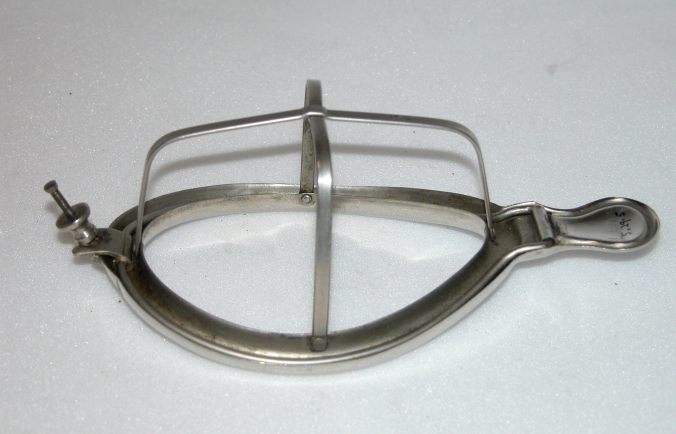
Schimmelbusch mask modified by Chadborn
This was the first mask with a gutter around the rim to collect the liquid anaesthetic agent, preventing it running down the face and irritating the eyes and skin. It became the standard open mask for use with chloroform and ether.

Trilene or Trichloroethylene
Tricholrethylene was first described by E Fischer in 1864. It was mass produced during the First World War when it was used to remove grease from metal and machinery. Its anaesthetic properties were tested by Langton Hewer in the 1930s and 1940s, and it was found to have a similar effect to chloroform, though was less toxic. It was often used as an analgesic for air raid victims, and was later used as a self-administered analgesic in obstetrics.
Ether
Ether was one of the most common anaesthtic agents during the Second World War.
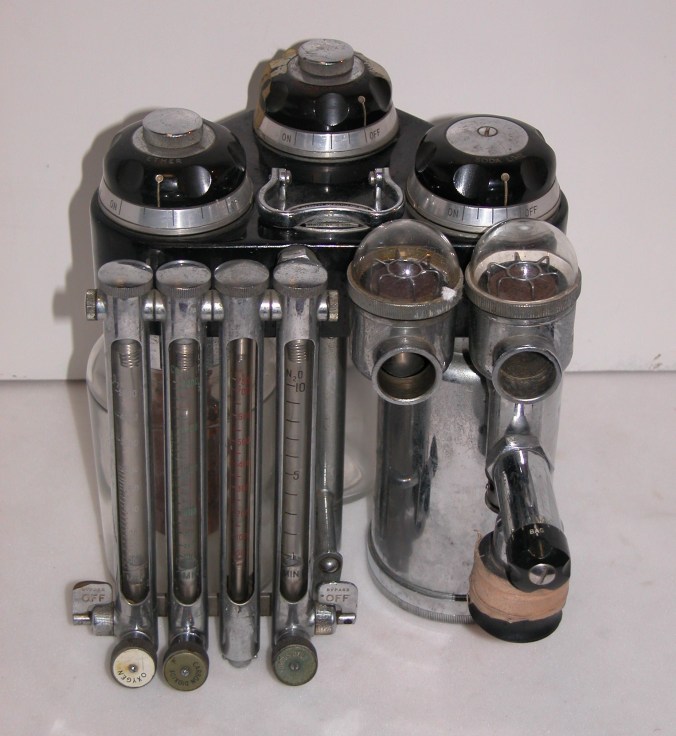
Marrett head vaporizer, 1942
A simple drawover vaporizer, the Marrett apparatus could be used with trilene or chloroform or both. First described in 1942, it was both portable and versatile. It was used with chloroform, ether, nitrous oxide, trichloroethylene, cyclopropane, carbon dioxide and oxygen.

Marrett apparatus, 1944
A prototype improvised from a German mine rescue set by Dr Marrett in Normandy. This was used as a closed-circuit system; unlike many other military anaesthetic machines, it mixed gases with the surrounding air without the need for extra cumbersome gas cylinders. It delivered ether and oxygen, and uses a coffee tin as an absorber for the gases.
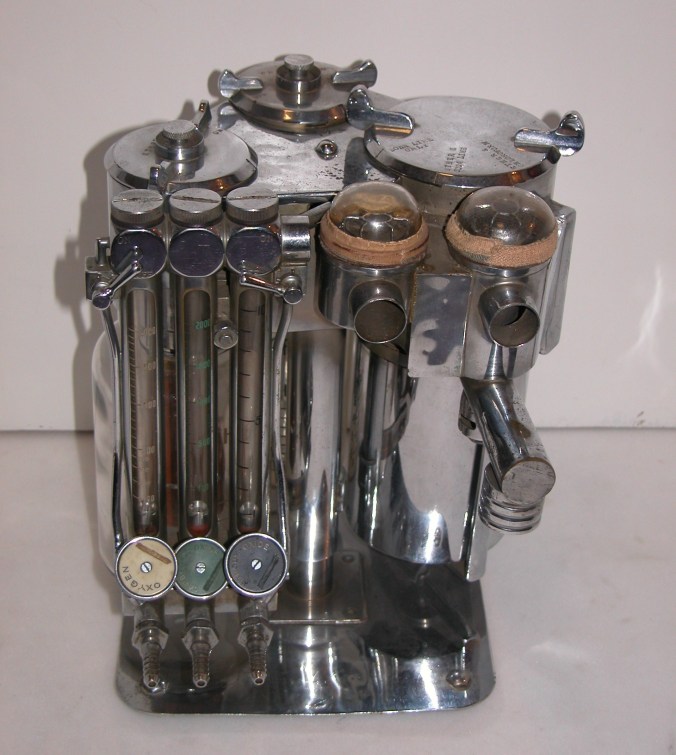
Marrett anaesthetic apparatus, 1950
This machine is the first industrial prototype of Marrett’s portable machine. The vaporiser is an integral metal chamber in a water bath, fed by a dropper from two internal chambers with separate ports on top, with knobs to control flow rate for each agent and cut-off levers. It was used with oxygen, cyclopropane, nitrous oxide, carbon dioxide, ether and trichloroethylene, and was designed for carrying with a fold-flat handle on top. It was donated to the museum by its inventor, Dr Marrett, in 1987.
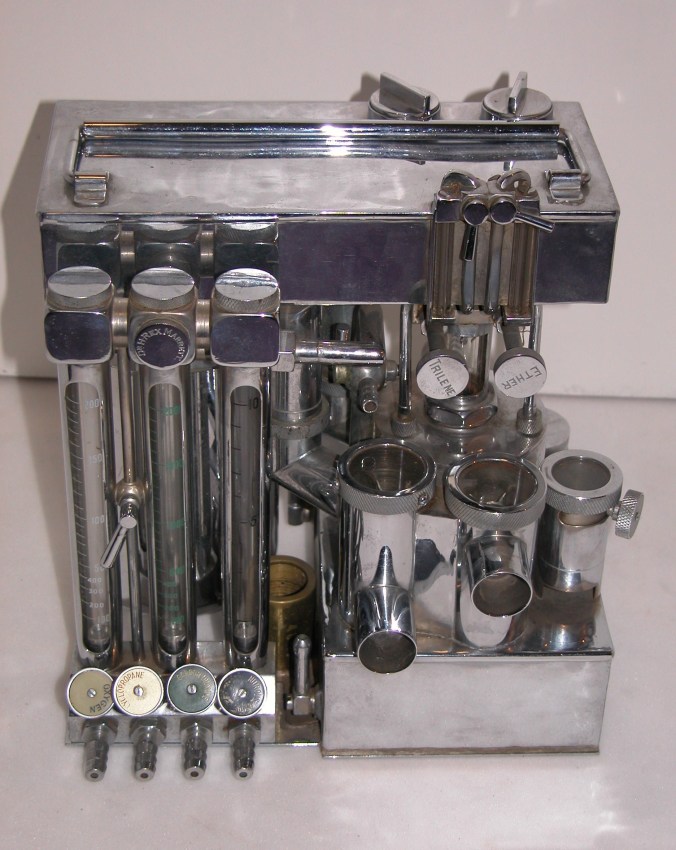
Marrett anaesthetic apparatus, 1950
This is the second industrial prototype of Marrett’s portable machine. It contains an absorber, flowmeters and vaporizers for different gases and used chloroform, ether, oxygen, carbon dioxide and nitrous oxide. This machine was donated to the Heritage Centre by Dr Marrett.
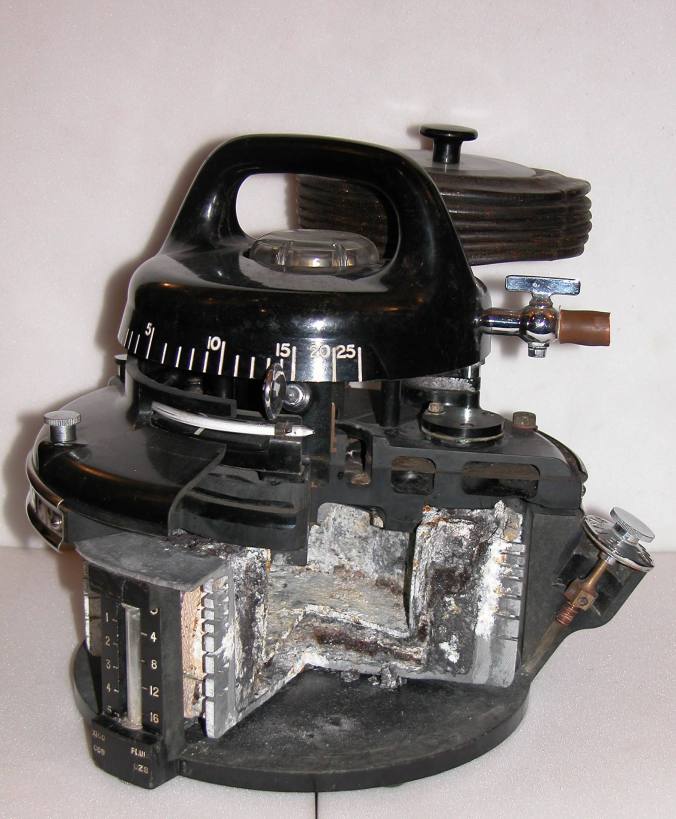
Oxford vaporizer
This example is sectioned to reveal its contents. It was made by Epstein and Macintosh in 1941 and was designed to deliver a specific concentration of ether without the need to heat water.
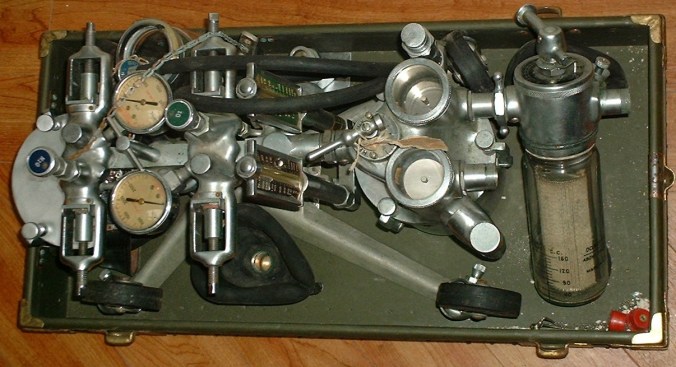
Heidbrink military model, no.685A
A military model, the type used by Marrett in the field, the Heidbrink machine contains flowmeters, and CO2 absorber and ether vaporizer to deliver a mixture of oxygen, ether and nitrous oxide for both full and light anaesthesia. Designed to be portable, it comes with its own carrying case.

Gordh needles
These needles were designed by Torsten Gordh to deliver intravenous anaesthetic. The shape of the needle meant that it could be left in the patient’s vein for several hours if necessary and the wings at its base allowed it to be taped into place. The design is a modification of Olovson and Meyer’s needle which enabled repeated injections to be given and which was produced in the late 1930s.
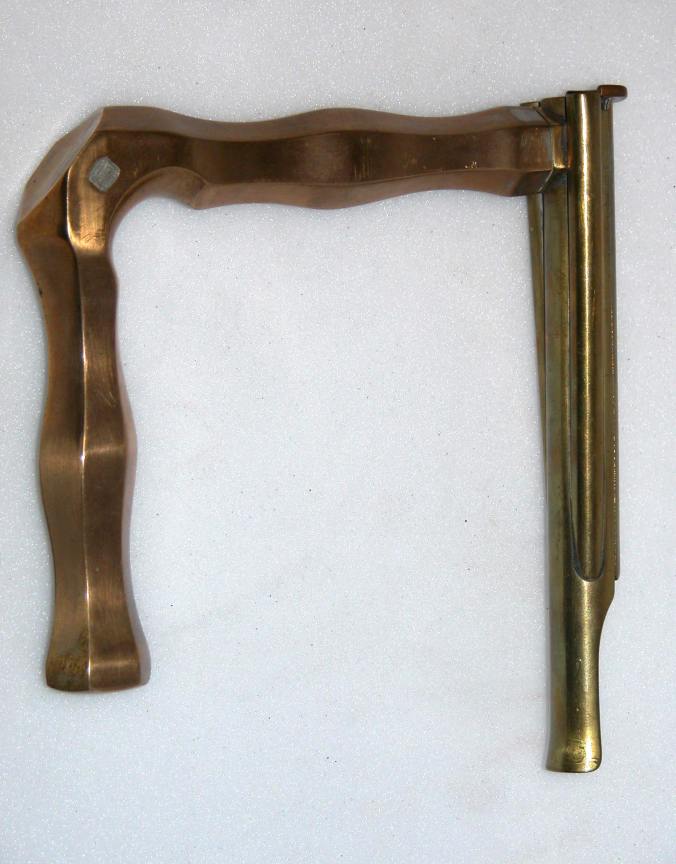
Chevalier Jackson laryngoscope
Chevalier Jackson designed the first modern, rigid laryngoscope in 1909 and this design was later modified by Magill and Macintosh. The laryngoscope blade was used to lift the base of the tongue and epiglottis, allowing examination of the throat.
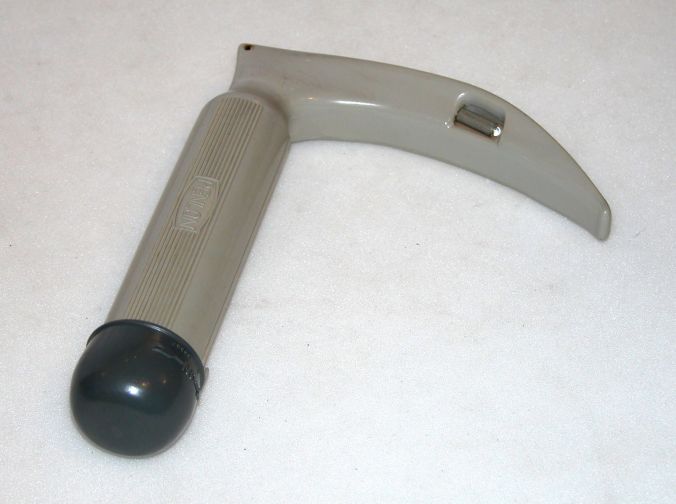
Penlon plastic laryngoscope
Lightweight plastic laryngoscope with fixed (non-removable) blade. The battery is housed in the handle, and inserted through a plate at the side and has no switch, contact being made by depressing and turning the terminal knob. The Penlon company was founded by anaesthetic staff at the University of Oxford, and one of their first products was the Macintosh laryngoscope.